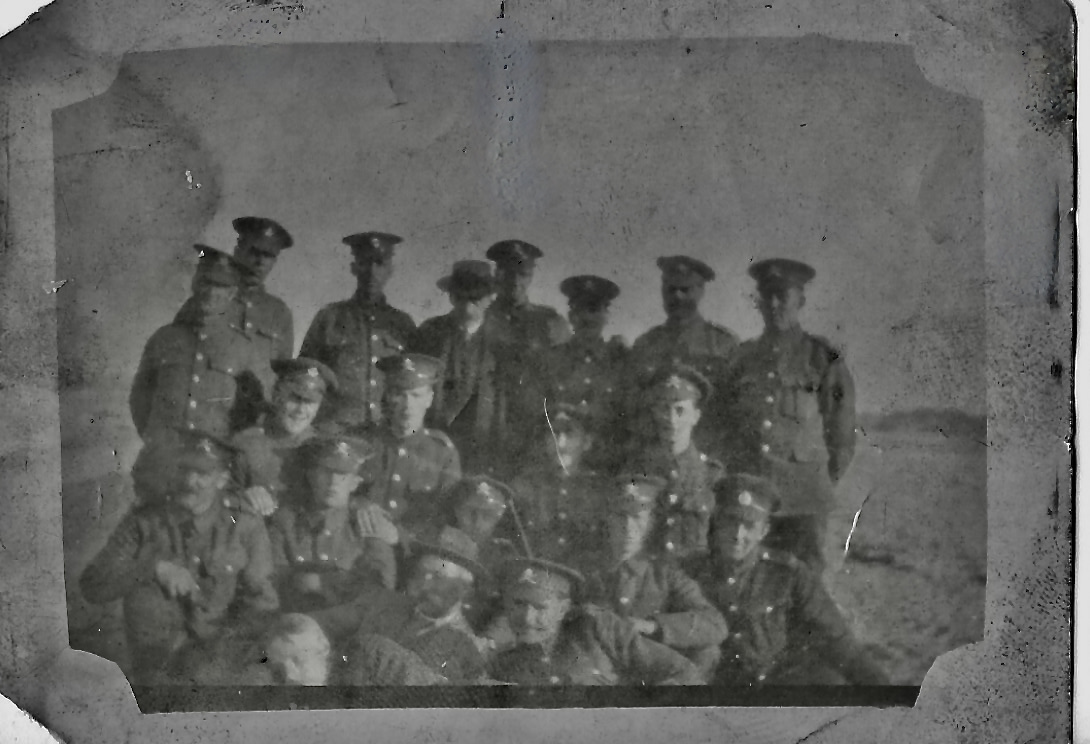Unknown Soldiers of the World
The first of the Unknown Soldiers
Last week the TV news channels in Australia reported the one hundredth anniversary of the burial of the first unknown soldier. The British government honoured an unknown soldier, laying him to rest in Westminster Abbey in London on 11th November 1920. His body was selected from four bodies brought from the battlefields of France – the Somme, Aisne, Arras and Ypres. He was assumed to be British but could have been Canadian, Australian or from New Zealand. He represented all the young men of the British Empire killed during “the war to end all wars”.
Other countries honour their soldiers, sailors and airmen (and women)
On the same day a French soldier was buried under the Arc de Triomphe. Several other nations honoured one of their war dead in the same way. There were plans to honour an unknown Australian Soldier in the 1920’s but it was not until 1993 that one was at last brought home. To mark the 75th anniversary of the end of World War One, the body of an unknown Australian soldier left the cemetery near Villers-Bretonneux in France and came home to Australia. He is now in the Hall of Memory at the Australian War Memorial in Canberra. He was buried with a bayonet and a sprig of wattle in a Tasmanian blackwood coffin and soil from the Pozieres battlefield was scattered in his tomb.
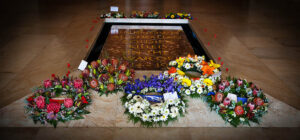
He represents all the Australians who have been killed in war.
My unknown soldiers
The same week as I saw the reports of the centenary of the unknown warrior, I came across a photo of a group of unknown soldiers. Over the last school holidays I took my nine year old daughter to the Herberton Historic Village.
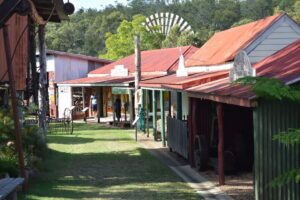
She loved it all and her grandma explained a lot about the exhibits. Abby was interested in the cigarette card collections. My mum told her that her granddad and Abby’s great great granddad had smoked Capstan Full Strength and used to get cards to collect in the packets. The cards were put into albums. There were kings and queens, football players and cricket players. The Village has some of these albums on display.
Collectors
Abby is a collector herself now. She has a card album and collects cards of NRL players and can also swap them with school mates. I showed her my stamp collections from an earlier age. We used to buy packets of used stamps from all over the world and arrange them by country in albums. I have five albums. There are a lot of British stamps as relatives in England wrote to us when we lived in Papua New Guinea and then Australia. My uncle Alan sent me a lot of first day cover stamps as he worked for the British Postal Service. In New Guinea we bought a lot of very special first day covers.
How do you collect stamps in 2020?
Abby thought stamp collecting was a very good idea but where do we get stamps from now when everyone uses email? It is not as easy or accessible as it once was. That is a pity because it is a good hobby. My mum’s partner Leif is from Sweden and sometimes wears a t shirt which declares that.
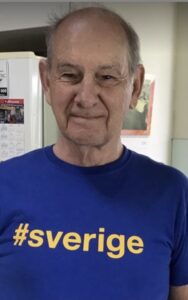
So many people of an age to be stamp collectors recognise sverige as it was on every Swedish stamp they saw!
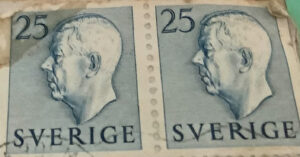
These stamps are from 1955 showing the then king Gustav VI Adolf.
My stamp collection and the unknown soldiers
Looking through the five albums for the first time in many years, I and Abby found an old dog eared photo.
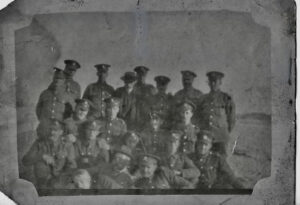
Abby wanted to know who they were. I had no idea. Abby’s dad thought they were World War I uniforms. We got out the magnifying glass but that did not help. We decided to ask my mum. At first she thought it was her grandfather in the photo. He had fought in WWI with the 9th Loyal North Lancashires. She said she would scan in the photo to see if she could improve the quality.
Technology to the rescue
Using the scanner on her all in one HP printer she scanned in the photo and saved it under the name “Unknown soldiers”. There are lots of applications to improve and touch up old photos. Firstly she used Lightroom on her IPAD. You can improve the light, the contrast and sharpen the images easily. You can also get rid of blemishes and you can enlarge. She further improved things with Photoshop. The result was not perfect by a long chalk but it was easier to see things such as the cap badge on the hats.
This gave the game away. It was the “Prince of Wales Feathers”.
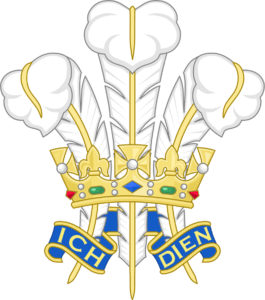
Mum knew who was in the photo and it was not her granddad but her father in law and my grandfather, Tom Easton. He had been in the cavalry when they still rode horses into battle. He had been in the Prince of Wales Own Tenth Hussars. She knew this because he had talked to her about it quite a lot.
The first time was when he came to stay with his newly married son and daughter in law in Beverley in the East Riding of Yorkshire. It was a rare very hot summer’s day and Tom had sat out in the garden soaking up the sun. My mum had warned him he would get burnt but he said the sun would not affect him – “I’ve been in India and Egypt”. Unfortunately that did not prove to be a good sun screen and he burnt badly and skin was flaking all over the house.
India and Egypt and the Tenth Hussars
He had served in the British Army and spent six years in India and Egypt. He was in a Cavalry regiment before it became mechanised and a tank regiment. Joining up in Middlesbrough when he was 18, he trained in the south of England and served in England at first. During this time he played football for the British Army team at right full back.
When he went on overseas service he served in the area near the Khyber Pass. He was one of many foes to try to test the Afghans. He apparently had a very wild horse and he alone could control it. When they left India he had to shoot his horse as no-one else would take it on. Mum remembers him telling her about visiting the pyramids on an educational trip. He and his mates spent the time rolling beer bottles down this wonder of the world.
He returned to England on the HMS Somersetshire. We have his log of the journey home. Mum’s favourite story of his was about what happened when he got back to the capital of the Empire. Kings Cross was the station for the line to the North East of England. He had with him an Indian silk shawl he had brought for his mother. She lived in Boulby near Staithes on the Yorkshire Coast. At Kings Cross he asked at the ticket office for a ticket to Boulby. This was a hamlet of about 4 houses. Even then they were dropping in the sea from coastal erosion. “Try again,” said the clerk.
“Staithes” did not get him any closer to his ticket.
“What’s the nearest big town?”
“Guisborough”
“Bigger than that”
“Middlesbrough”
“Now you’re talking!”
More Help from Technology
My grandfather was on the far left on the back row in the photo. I had known very little about him. Mum said she had a DVD disc with family history on it. My cousin Vicki had done some research some years ago and there was a whole chapter on Tom.
Not many computers have Disc drives these days but Leif’s laptop has one so mum put the disk in there and copied the whole contents of the disk into Dropbox which is an online storage application. She and I have a shared file on there so we can share large documents and photos. So I was able to read a lot about him. What a character he was! Working in ironstone mines on his return to Yorkshire he was crushed in a mine accident. He was subject to inhaling unhealthy substances when he worked in a chemical factory (ICI). The last years of his life he was an invalid reliant on an inhaler to help him breathe. He did apparently meet me and used to rock me to sleep in my first months of life. If you are interested there are some family stories about him.
Family Memories and Technology go hand in hand
What I know about my grandfather comes from word of mouth as remembered by family plus information found on the internet. Vicki got a lot of information on line and found his birth and marriage certificate, and his discharge from the cavalry papers. Mum researched the 10th Hussars and found out where and when they were in India and Egypt. It is an important combination – family stories and technology.
If you have stories put them in a document; if you have photos scan them in and if you have elderly living relatives talk to them and write it down. Mum scanned in a photo of her mum and dad on honeymoon and was amazed to find Apple Photos could tell where the photo had been taken – in this case Braddon on the Isle of Man. She scanned in a photo of her father in RAF uniform in Paris in 1945 and it said exactly which arondissement it was. It could have been a clue that the Eiffel tower was in the background!

